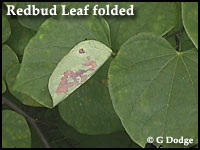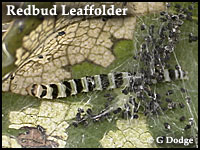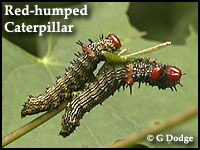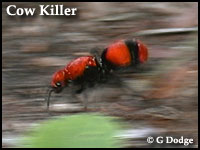All grasshoppers are well camouflaged, usually for life, in the grass or on leaves. Pinetree Spurthroated Grasshoppers (Melanoplus punctulatus) look a bit like lichen-covered tree bark. I found one on the trunk of an Oak Tree. As you can see from the two images below (#1 and #2), they blend in quite well.
Treehoppers are small insects which are often shaped like various tree or plant parts: thorns, buds, or perhaps tiny leaves. When disturbed they often quickly “hop” away. The treehopper in the photo below (#3) was down in the weeds. Thorn Treehoppers (Campylenchia latipes) seem to prefer herbaceous plants instead of trees.



For the past several weeks I’ve noticed some of the leaves folded over on many of the Redbud Trees on the Explore the Wild/Catch the Wind Loop. Small leaves had been folded completely in half while some of the larger leaves of the trees only partially folded (image below). The caterpillars of some species of moth and butterfly roll up leaves and tie or seal them with silk to help conceal themselves while feeding on the leaves, or while resting after having fed. Curious, I decided to have a closer look.
I opened a dozen or so of the folded leaves and found a single, tiny (about 1/2” or 13 mm) black and white banded caterpillar in each leaf that was occupied (some leaves had no caterpillar, although the silk and frass were still there). Redbud Leaffolders (Fascista cercervisella) are small moths. When the caterpillars of these moths move about, they move very rapidly as if in fast-forward mode. If you see any Redbud leaves folded in the manner depicted, take a look inside. How do these tiny caterpillars fold the leaves?
On one Redbud Tree (on the back side of the Loop between Explore the Wild and Catch the Wind), there were many Red-humped Caterpillars (see Explore the Wild Journal, July 16-31 ). Unlike the Redbud Leaffolder above, these moths seem to be a bit less particular in their choice of host plant. There’s a long list of woody plants on which you can expect to see Red-humped Caterpillars munching.
One of the staff at the Museum told me that he had seen a Cow Killer. A few days later I saw one myself. July and August seems to be the time to see Cow Killers. These large wasps, also called Red Velvet Ants due to their hairy, velvety appearance, are flightless – that is, the females are flightless. And, it’s the females that sting. I hear it’s a painful sting (I’ve yet to tease one sufficiently to test how painful the sting is).
I’ve rarely seen a Cow Killer stand still long enough to have its picture taken (the one pictured above is from video and is moving fast). These wasps are constantly on the move, running around the ground searching, hardly stopping. They’re looking for a ground-nesting bee’s nest in which to lay their eggs. After digging into a bee nest chamber, these wasps lay an egg on a bee larva. When the egg hatches the wasp larva eats the bee larva.



